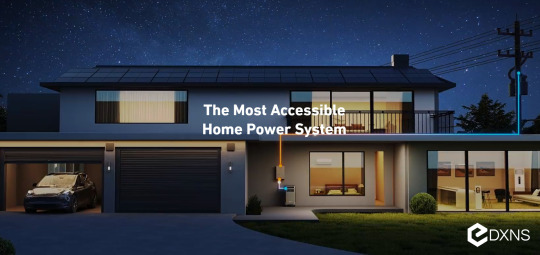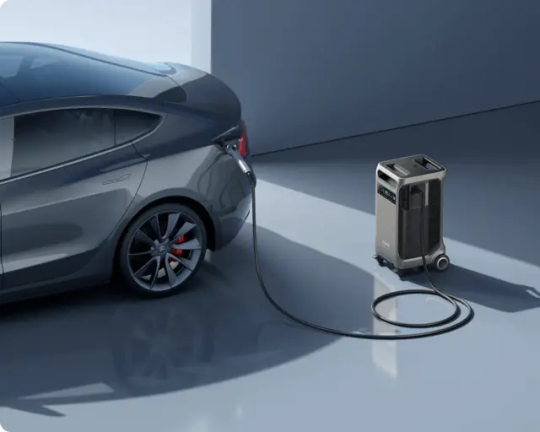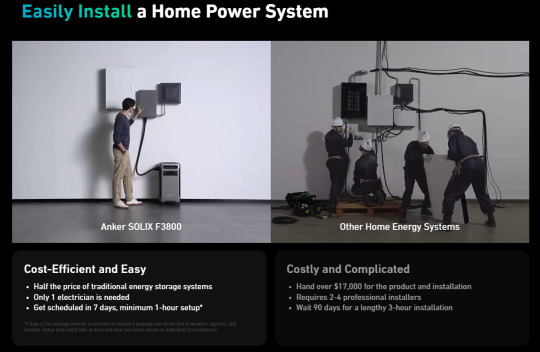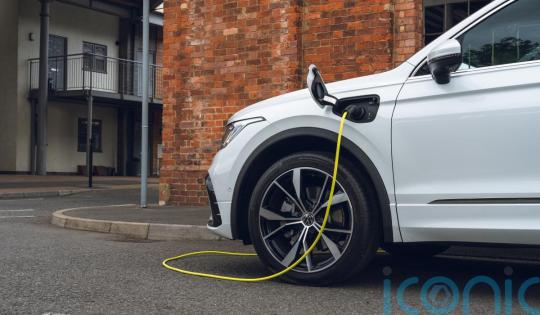#Charging Station Smart Ev
Explore tagged Tumblr posts
Text
Revolutionizing Mobility with Public EV Charging Stations and Smart EV Chargers in India
Electric vehicles (EVs) are no longer the future; they are the present. As the world shifts towards sustainable living, the demand for electric vehicles is skyrocketing. In India, this revolution is gaining momentum, driven by the rapid adoption of EVs and the growing need for efficient charging solutions. At the heart of this transformation are public EV charging stations and smart EV chargers, the pillars of a sustainable transportation ecosystem.

The Growing Need for Public EV Charging Stations in India
India is witnessing an EV boom, with more individuals and businesses opting for electric cars, bikes, and buses. However, a significant factor influencing the adoption of EVs is the availability of reliable public EV charging stations. These stations are essential for addressing the range anxiety that many EV owners face.
Key Benefits of Public EV Charging Stations:
Convenience: Public EV charging stations allow users to recharge their vehicles during daily commutes, making EV ownership practical.
Increased Adoption: With a robust charging infrastructure, more people are encouraged to switch to EVs.
Reduced Carbon Footprint: By supporting EV usage, these stations contribute to lowering greenhouse gas emissions.
Economic Opportunities: The growing EV sector creates jobs and attracts investments in charging infrastructure development.
The Indian government is actively promoting the installation of public EV charging stations through initiatives like FAME India (Faster Adoption and Manufacturing of Hybrid and Electric Vehicles). Subsidies and incentives are also being offered to businesses and individuals to set up these charging points.
Understanding Smart EV Chargers
While public EV charging stations are critical, the integration of smart EV chargers takes the EV charging experience to the next level. Smart chargers are technologically advanced devices designed to optimize charging efficiency, monitor energy usage, and provide seamless connectivity.
Features of Smart EV Chargers:
Intelligent Charging: Smart chargers can schedule charging during off-peak hours to save costs.
Remote Monitoring: Users can track charging progress and energy consumption through mobile apps.
Fast Charging Options: Many smart chargers support rapid charging, reducing downtime for EV owners.
Energy Efficiency: They ensure minimal energy wastage and contribute to sustainable energy use.
Integration with Renewable Energy: Smart EV chargers can integrate with solar panels, enabling clean energy utilization.
The Role of Amped India in Transforming EV Charging
At Amped India, we are committed to revolutionizing the EV ecosystem by providing cutting-edge solutions for public EV charging stations and smart EV chargers. Our mission is to make EV charging accessible, efficient, and environmentally friendly.
Why Choose Amped India?
Comprehensive Solutions: We offer a range of public EV charging stations suitable for urban and rural locations.
Smart Technology: Our smart EV chargers are equipped with advanced features for an enhanced user experience.
Sustainability Focus: We prioritize eco-friendly solutions to reduce environmental impact.
Customer-Centric Approach: Our services are tailored to meet the unique needs of individuals, businesses, and municipalities.
Challenges in EV Charging Infrastructure and How Amped India Addresses Them
1. Limited Charging Points:
Despite the growing number of EVs, the availability of charging stations remains limited. Amped India aims to bridge this gap by installing strategically located charging points across the country.
2. Range Anxiety:
EV users often worry about running out of charge during long trips. Amped India’s fast-charging stations provide quick and reliable charging solutions, reducing range anxiety.
3. High Initial Costs:
Setting up charging infrastructure can be expensive. Amped India offers cost-effective solutions and leverages government incentives to make installations affordable.
4. Lack of Awareness:
Many potential EV users are unaware of available charging options. Amped India conducts awareness campaigns to educate the public about EV charging benefits and locations.
How Public EV Charging Stations and Smart Chargers Drive Sustainability
The adoption of public EV charging stations and smart EV chargers directly impacts environmental and economic sustainability:
Reduced Dependency on Fossil Fuels: Encouraging EV usage decreases reliance on non-renewable energy sources.
Lower Pollution Levels: EVs produce no tailpipe emissions, leading to cleaner air and healthier cities.
Energy Optimization: Smart EV chargers utilize electricity efficiently, promoting sustainable energy consumption.
Economic Growth: The EV charging sector creates jobs, boosts local economies, and attracts foreign investments.
The Future of EV Charging in India
The future of EV charging in India is bright, with numerous advancements on the horizon:
Ultra-Fast Charging: Emerging technologies aim to reduce charging times to mere minutes.
Wireless Charging: Inductive charging systems will eliminate the need for physical connections.
Integration with Smart Grids: Smart chargers will interact with power grids for optimal energy distribution.
Expansion to Rural Areas: Efforts are underway to extend EV charging infrastructure beyond urban centers.
Amped India is at the forefront of these innovations, ensuring that India remains a leader in the global EV revolution.
How to Get Started with Amped India
Whether you’re an individual EV owner, a business looking to install charging stations, or a municipality planning city-wide infrastructure, Amped India has the right solution for you. Contact us today to explore our range of public EV charging stations and smart EV chargers.
Conclusion
The journey towards a sustainable future begins with small yet impactful steps, like adopting electric vehicles and supporting the growth of charging infrastructure. Public EV charging stations and smart EV chargers are the building blocks of a greener India. With innovative solutions from Amped India, the transition to a sustainable, electrified future has never been easier. Join us in revolutionizing mobility and creating a cleaner, greener India.
0 notes
Text
Power Up: Discovering the Best EV Charging Solutions in the UK
As electric vehicles (EVs) become the future of transportation, having access to reliable charging solutions is essential. Whether you’re charging at home or setting up a commercial station, the UK offers a variety of options tailored to every need. Let’s explore how Electric Vehicle Charging Solutions can make your journey smoother and more sustainable.
Why EV Charging Matters

Home EV Charging Made Simple
Convenience at Your Doorstep Installing a home electric car charger transforms the way you recharge your vehicle. With smart features and compact designs, modern chargers make overnight charging effortless.
2. Affordable Solutions The UK market offers affordable options for EV Home Charger Installations, ensuring that more homeowners can benefit from efficient charging at their convenience.
Commercial Charging: A Smart Investment
Businesses are also embracing commercial EV charger installations to cater to growing customer demand. From retail spaces to office parking lots, these stations not only attract EV drivers but also contribute to a company’s sustainability goals.
Key Benefits of Commercial Charging
Affordable commercial EV charger installation costs in the UK.
Scalable solutions for growing needs.
Enhanced brand image through eco-friendly initiatives.
Essential Accessories for EV Owners
To optimize your EV charging experience, consider investing in EV Charger Accessories like type 2 charging cables. These ensure compatibility and efficiency, making your charging process seamless.
Choosing the Best EV Charging Solution in the UK
With numerous options available, selecting the right charger depends on your needs. For example:
Fast Chargers: Ideal for quick energy boosts on the go.
Smart Chargers: Perfect for optimizing energy use and saving on electricity costs.
Whether you’re looking for electric car charging points in the UK or the best car fast chargers, there’s a solution designed just for you.
The Road Ahead
The UK’s commitment to sustainability ensures continuous advancements in electric car charging stations. From home installations to expansive commercial EV charging stations, there’s a growing network of reliable charging solutions.
Conclusion
Switching to electric vehicles is more than just a trend; it’s a commitment to a greener planet. With the right charging solutions, you can enjoy the convenience and cost savings of EV ownership. Explore the best options today and take a step toward a sustainable future!
Power your journey with the best in EV charging technology — because the future is electric.
#commercial ev charger installation cost uk#ev charger accessories#electric vehicle chargers#electric car home charger in bramhall#zap uk ev#best car fast charger#electric vehicle products in uk#best smart ev products uk#ev charger accessories in uk#electric vehicle charging station in bramhall
0 notes
Text

#israeli trips#mother אמא#קִרְיַת מוֹצְקִין#old neigborhood#my roots#Kiryat motzkin#my photos#street photography#electric cars#electric vehicles#evs#ev charger#charging station#smart car
1 note
·
View note
Text
ANKER SOLIX F3800: A Total Game Changer in Home Energy
Welcome to the future of home power solutions with the Anker SOLIX F3800. In a world where energy independence, sustainability, and efficiency are paramount, the SOLIX F3800 stands as a beacon of technological innovation and progress. As you step into the realm of cutting-edge power storage and generation.

The SOLIX F3800 represents a pivotal moment in the evolution of power systems, revolutionizing the way we approach home energy. With its remarkable power output, expandable design, and unwavering commitment to sustainability, this groundbreaking product promises to redefine the way we think about power in our homes.
Anker, renowned for its innovation in the tech industry, introduces a game-changing solution, the SOLIX F3800. This high-performance home power system is making its debut on Kickstarter, signaling a new era of energy independence for consumers worldwide. In this comprehensive technical review, we'll delve into the cutting-edge features and capabilities of the SOLIX F3800.

High-Powered Performance:
The SOLIX F3800 is not your ordinary power station; it's an exceptional home power solution that, when combined with the Anker SOLIX Home Power Panel, offers a comprehensive home power cycle. What truly sets the F3800 apart is its remarkable 6,000W AC power output and dual voltage support of 120V/240V. This means it can effortlessly handle high-energy devices such as washing machines, dryers, and even full-size refrigerators.
Impressive Battery Capacity:
But that's just the beginning. The F3800 houses a substantial 3.84kWh internal battery, ensuring uninterrupted power during outages. The expandable design of the system allows users to customize their power storage requirements by adding up to six additional batteries, providing a remarkable total of up to 26.88kWh.



Portability and Versatility:
Despite its potent home power capabilities, the SOLIX F3800 is a portable powerhouse. Its suitcase-style design, retractable handle, and large wheels make it easy to transport. Additionally, it features a NEMA 14-50 RV port, making it perfect for powering RV appliances, catering to travelers and outdoor enthusiasts.
EV Charging Solution:
For electric vehicle (EV) users, the F3800 offers a significant advantage. With direct connection support for vehicle charging at 6000W/240V, and the addition of six expansion batteries, it can provide up to 140km (87 miles) of EV range. This makes it a convenient and reliable home charging solution for EV owners, even during power outages.




Sustainability and Reliability:
The SOLIX F3800 isn't just about providing robust power; it's about doing so sustainably and reliably. Unlike traditional gas generators, the F3800 operates cleanly and quietly, eliminating noise and pollution. It directly charges your inlet box, saving you the inconvenience and expense of acquiring gasoline.

Efficient Installation:
Installing a home power system has never been more straightforward and cost-effective. The SOLIX F3800 costs just half of what a traditional energy storage system would, and it can be installed by a single electrician in just a few hours. Say goodbye to exorbitant installation fees and lengthy wait times.

Exclusive Kickstarter Benefits:
The SOLIX F3800 Kickstarter campaign presents an exclusive opportunity for early adopters to secure this cutting-edge power solution at remarkable prices, with a substantial 45% discount. Furthermore, subscribers can look forward to a range of exclusive benefits, including entry into a lucky draw, extended warranties, priority shipping, and more. As the subscriber count surpasses 50,000, the deals become even more enticing.
Comprehensive Home Energy Solution:
The SOLIX F3800 is designed to meet all your home energy needs, from powering essential appliances during blackouts to recharging your electric vehicle. It ensures a safe and comfortable home environment with its quiet operation and pollution-free power supply.
IFA Trade Show Debut:
The SOLIX F3800 made its grand debut at the IFA trade show in Berlin, Germany. Alongside it, Anker SOLIX unveiled the Anker SOLIX C1000 Portable Power Station, setting new standards for power energy independence. The event showcased the potential of the next-generation power stations and their commitment to a sustainable future.
Conclusion:
As the SOLIX F3800 Kickstarter campaign unfolds, it's evident that the future of power storage is here. With its exceptional features, cost-effectiveness, and unwavering dedication to sustainability, the F3800 is poised to usher in a new era of energy independence. If you're interested in learning more or seizing early bird benefits, join us on the journey to power a brighter tomorrow with Anker SOLIX.
For more product information and kick-start campaign, visit the following links: Anker, Kickstarter.
0 notes
Text
Cleantech has an enshittification problem

On July 14, I'm giving the closing keynote for the fifteenth HACKERS ON PLANET EARTH, in QUEENS, NY. Happy Bastille Day! On July 20, I'm appearing in CHICAGO at Exile in Bookville.

EVs won't save the planet. Ultimately, the material bill for billions of individual vehicles and the unavoidable geometry of more cars-more traffic-more roads-greater distances-more cars dictate that the future of our cities and planet requires public transit – lots of it.
But no matter how much public transit we install, there's always going to be some personal vehicles on the road, and not just bikes, ebikes and scooters. Between deliveries, accessibility, and stubbornly low-density regions, there's going to be a lot of cars, vans and trucks on the road for the foreseeable future, and these should be electric.
Beyond that irreducible minimum of personal vehicles, there's the fact that individuals can't install their own public transit system; in places that lack the political will or means to create working transit, EVs are a way for people to significantly reduce their personal emissions.
In policy circles, EV adoption is treated as a logistical and financial issue, so governments have focused on making EVs affordable and increasing the density of charging stations. As an EV owner, I can affirm that affordability and logistics were important concerns when we were shopping for a car.
But there's a third EV problem that is almost entirely off policy radar: enshittification.
An EV is a rolling computer in a fancy case with a squishy person inside of it. While this can sound scary, there are lots of cool implications for this. For example, your EV could download your local power company's tariff schedule and preferentially charge itself when the rates are lowest; they could also coordinate with the utility to reduce charging when loads are peaking. You can start them with your phone. Your repair technician can run extensive remote diagnostics on them and help you solve many problems from the road. New features can be delivered over the air.
That's just for starters, but there's so much more in the future. After all, the signal virtue of a digital computer is its flexibility. The only computer we know how to make is the Turing complete, universal, Von Neumann machine, which can run every valid program. If a feature is computationally tractable – from automated parallel parking to advanced collision prevention – it can run on a car.
The problem is that this digital flexibility presents a moral hazard to EV manufacturers. EVs are designed to make any kind of unauthorized, owner-selected modification into an IP rights violation ("IP" in this case is "any law that lets me control the conduct of my customers or competitors"):
https://locusmag.com/2020/09/cory-doctorow-ip/
EVs are also designed so that the manufacturer can unilaterally exert control over them or alter their operation. EVs – even more than conventional vehicles – are designed to be remotely killswitched in order to help manufacturers and dealers pressure people into paying their car notes on time:
https://pluralistic.net/2023/07/24/rent-to-pwn/#kitt-is-a-demon
Manufacturers can reach into your car and change how much of your battery you can access:
https://pluralistic.net/2023/07/28/edison-not-tesla/#demon-haunted-world
They can lock your car and have it send its location to a repo man, then greet him by blinking its lights, honking its horn, and pulling out of its parking space:
https://tiremeetsroad.com/2021/03/18/tesla-allegedly-remotely-unlocks-model-3-owners-car-uses-smart-summon-to-help-repo-agent/
And of course, they can detect when you've asked independent mechanic to service your car and then punish you by degrading its functionality:
https://www.repairerdrivennews.com/2024/06/26/two-of-eight-claims-in-tesla-anti-trust-lawsuit-will-move-forward/
This is "twiddling" – unilaterally and irreversibly altering the functionality of a product or service, secure in the knowledge that IP law will prevent anyone from twiddling back by restoring the gadget to a preferred configuration:
https://pluralistic.net/2023/02/19/twiddler/
The thing is, for an EV, twiddling is the best case scenario. As bad as it is for the company that made your EV to change how it works whenever they feel like picking your pocket, that's infinitely preferable to the manufacturer going bankrupt and bricking your car.
That's what just happened to owners of Fisker EVs, cars that cost $40-70k. Cars are long-term purchases. An EV should last 12-20 years, or even longer if you pay to swap the battery pack. Fisker was founded in 2016 and shipped its first Ocean SUV in 2023. The company is now bankrupt:
https://insideevs.com/news/723669/fisker-inc-bankruptcy-chapter-11-official/
Fisker called its vehicles "software-based cars" and they weren't kidding. Without continuous software updates and server access, those Fisker Ocean SUVs are turning into bricks. What's more, the company designed the car from the ground up to make any kind of independent service and support into a felony, by wrapping the whole thing in overlapping layers of IP. That means that no one can step in with a module that jailbreaks the Fisker and drops in an alternative firmware that will keep the fleet rolling.
This is the third EV risk – not just finance, not just charger infrastructure, but the possibility that any whizzy, cool new EV company will go bust and brick your $70k cleantech investment, irreversibly transforming your car into 5,500 lb worth of e-waste.
This confers a huge advantage onto the big automakers like VW, Kia, Ford, etc. Tesla gets a pass, too, because it achieved critical mass before people started to wise up to the risk of twiddling and bricking. If you're making a serious investment in a product you expect to use for 20 years, are you really gonna buy it from a two-year old startup with six months' capital in the bank?
The incumbency advantage here means that the big automakers won't have any reason to sink a lot of money into R&D, because they won't have to worry about hungry startups with cool new ideas eating their lunches. They can maintain the cozy cartel that has seen cars stagnate for decades, with the majority of "innovation" taking the form of shitty, extractive and ill-starred ideas like touchscreen controls and an accelerator pedal that you have to rent by the month:
https://www.theverge.com/2022/11/23/23474969/mercedes-car-subscription-faster-acceleration-feature-price
Put that way, it's clear that this isn't an EV problem, it's a cleantech problem. Cleantech has all the problems of EVs: it requires a large capital expenditure, it will be "smart," and it is expected to last for decades. That's rooftop solar, heat-pumps, smart thermostat sensor arrays, and home storage batteries.
And just as with EVs, policymakers have focused on infrastructure and affordability without paying any attention to the enshittification risks. Your rooftop solar will likely be controlled via a Solaredge box – a terrible technology that stops working if it can't reach the internet for a protracted period (that's right, your home solar stops working if the grid fails!).
I found this out the hard way during the covid lockdowns, when Solaredge terminated its 3G cellular contract and notified me that I would have to replace the modem in my system or it would stop working. This was at the height of the supply-chain crisis and there was a long waiting list for any replacement modems, with wifi cards (that used your home internet rather than a cellular connection) completely sold out for most of a year.
There are good reasons to connect rooftop solar arrays to the internet – it's not just so that Solaredge can enshittify my service. Solar arrays that coordinate with the grid can make it much easier and safer to manage a grid that was designed for centralized power production and is being retrofitted for distributed generation, one roof at a time.
But when the imperatives of extraction and efficiency go to war, extraction always wins. After all, the Solaredge system is already in place and solar installers are largely ignorant of, and indifferent to, the reasons that a homeowner might want to directly control and monitor their system via local controls that don't roundtrip through the cloud.
Somewhere in the hindbrain of any prospective solar purchaser is the experience with bricked and enshittified "smart" gadgets, and the knowledge that anything they buy from a cool startup with lots of great ideas for improving production, monitoring, and/or costs poses the risk of having your 20 year investment bricked after just a few years – and, thanks to the extractive imperative, no one will be able to step in and restore your ex-solar array to good working order.
I make the majority of my living from books, which means that my pay is very "lumpy" – I get large sums when I publish a book and very little in between. For many years, I've used these payments to make big purchases, rather than financing them over long periods where I can't predict my income. We've used my book payments to put in solar, then an induction stove, then a battery. We used one to buy out the lease on our EV. And just a month ago, we used the money from my upcoming Enshittification book to put in a heat pump (with enough left over to pay for a pair of long-overdue cataract surgeries, scheduled for the fall).
When we started shopping for heat pumps, it was clear that this was a very exciting sector. First of all, heat pumps are kind of magic, so efficient and effective it's almost surreal. But beyond the basic tech – which has been around since the late 1940s – there is a vast ferment of cool digital features coming from exciting and innovative startups.
By nature, I'm the kid of person who likes these digital features. I started out as a computer programmer, and while I haven't written production code since the previous millennium, I've been in and around the tech industry for my whole adult life. But when it came time to buy a heat-pump – an investment that I expected to last for 20 years or more – there was no way I was going to buy one of these cool new digitally enhanced pumps, no matter how much the reviewers loved them. Sure, they'd work well, but it's precisely because I'm so knowledgeable about high tech that I could see that they would fail very, very badly.
You may think EVs are bullshit, and they are – though there will always be room for some personal vehicles, and it's better for people in transit deserts to drive EVs than gas-guzzlers. You may think rooftop solar is a dead-end and be all-in on utility scale solar (I think we need both, especially given the grid-disrupting extreme climate events on our horizon). But there's still a wide range of cleantech – induction tops, heat pumps, smart thermostats – that are capital intensive, have a long duty cycle, and have good reasons to be digitized and networked.
Take home storage batteries: your utility can push its rate card to your battery every time they change their prices, and your battery can use that information to decide when to let your house tap into the grid, and when to switch over to powering your home with the solar you've stored up during the day. This is a very old and proven pattern in tech: the old Fidonet BBS network used a version of this, with each BBS timing its calls to other nodes to coincide with the cheapest long-distance rates, so that messages for distant systems could be passed on:
https://en.wikipedia.org/wiki/FidoNet
Cleantech is a very dynamic sector, even if its triumphs are largely unheralded. There's a quiet revolution underway in generation, storage and transmission of renewable power, and a complimentary revolution in power-consumption in vehicles and homes:
https://pluralistic.net/2024/06/12/s-curve/#anything-that-cant-go-on-forever-eventually-stops
But cleantech is too important to leave to the incumbents, who are addicted to enshittification and planned obsolescence. These giant, financialized firms lack the discipline and culture to make products that have the features – and cost savings – to make them appealing to the very wide range of buyers who must transition as soon as possible, for the sake of the very planet.
It's not enough for our policymakers to focus on financing and infrastructure barriers to cleantech adoption. We also need a policy-level response to enshittification.
Ideally, every cleantech device would be designed so that it was impossible to enshittify – which would also make it impossible to brick:
Based on free software (best), or with source code escrowed with a trustee who must release the code if the company enters administration (distant second-best);
All patents in a royalty-free patent-pool (best); or in a trust that will release them into a royalty-free pool if the company enters administration (distant second-best);
No parts-pairing or other DRM permitted (best); or with parts-pairing utilities available to all parties on a reasonable and non-discriminatory basis (distant second-best);
All diagnostic and error codes in the public domain, with all codes in the clear within the device (best); or with decoding utilities available on demand to all comers on a reasonable and non-discriminatory basis (distant second-best).
There's an obvious business objection to this: it will reduce investment in innovative cleantech because investors will perceive these restrictions as limits on the expected profits of their portfolio companies. It's true: these measures are designed to prevent rent-extraction and other enshittificatory practices by cleantech companies, and to the extent that investors are counting on enshittification rents, this might prevent them from investing.
But that has to be balanced against the way that a general prohibition on enshittificatory practices will inspire consumer confidence in innovative and novel cleantech products, because buyers will know that their investments will be protected over the whole expected lifespan of the product, even if the startup goes bust (nearly every startup goes bust). These measures mean that a company with a cool product will have a much larger customer-base to sell to. Those additional sales more than offset the loss of expected revenue from cheating and screwing your customers by twiddling them to death.
There's also an obvious legal objection to this: creating these policies will require a huge amount of action from Congress and the executive branch, a whole whack of new rules and laws to make them happen, and each will attract court-challenges.
That's also true, though it shouldn't stop us from trying to get legal reforms. As a matter of public policy, it's terrible and fucked up that companies can enshittify the things we buy and leave us with no remedy.
However, we don't have to wait for legal reform to make this work. We can take a shortcut with procurement – the things governments buy with public money. The feds, the states and localities buy a lot of cleantech: for public facilities, for public housing, for public use. Prudent public policy dictates that governments should refuse to buy any tech unless it is designed to be enshittification-resistant.
This is an old and honorable tradition in policymaking. Lincoln insisted that the rifles he bought for the Union Army come with interoperable tooling and ammo, for obvious reasons. No one wants to be the Commander in Chief who shows up on the battlefield and says, "Sorry, boys, war's postponed, our sole supplier decided to stop making ammunition."
By creating a market for enshittification-proof cleantech, governments can ensure that the public always has the option of buying an EV that can't be bricked even if the maker goes bust, a heat-pump whose digital features can be replaced or maintained by a third party of your choosing, a solar controller that coordinates with the grid in ways that serve their owners – not the manufacturers' shareholders.
We're going to have to change a lot to survive the coming years. Sure, there's a lot of scary ways that things can go wrong, but there's plenty about our world that should change, and plenty of ways those changes could be for the better. It's not enough for policymakers to focus on ensuring that we can afford to buy whatever badly thought-through, extractive tech the biggest companies want to foist on us – we also need a focus on making cleantech fit for purpose, truly smart, reliable and resilient.

Support me this summer on the Clarion Write-A-Thon and help raise money for the Clarion Science Fiction and Fantasy Writers' Workshop!

If you'd like an essay-formatted version of this post to read or share, here's a link to it on pluralistic.net, my surveillance-free, ad-free, tracker-free blog:
https://pluralistic.net/2024/06/26/unplanned-obsolescence/#better-micetraps

Image: 臺灣古寫真上色 (modified) https://commons.wikimedia.org/wiki/File:Raid_on_Kagi_City_1945.jpg
Grendelkhan (modified) https://commons.wikimedia.org/wiki/File:Ground_mounted_solar_panels.gk.jpg
CC BY-SA 4.0 https://creativecommons.org/licenses/by-sa/4.0/deed.en
#pluralistic#procurement#cleantech#evs#solar#solarpunk#policy#copyfight#copyright#felony contempt of business model#floss#free software#open source#oss#dmca 1201#interoperability#adversarial interoperability#solarization#electrification#enshittification#innovation#incumbency#climate#climate emergency
429 notes
·
View notes
Text
Came across another example...
"Electric vehicles are not the solution!"
"Yes, I really wish we could focus more on trains and public transportation."
"Mining for battery materials hurts the environment more than fossil fuels!"
"Oh."
EVs are *part* of the solution. There are going to be people who insist on driving their own vehicle. Not to mention public transport is not always viable for disabled folks. And even if we were building trains and public transportation infrastructure, that is a multi-decade project.
But the laser focus on EVs is very disappointing. We need trains and buses and more trains and let's throw in a few more trains for good measure.
Thomas knows what I'm talking about...

EVs are definitely better than ICE vehicles. And if we can build a renewable charging infrastructure by installing more solar on homes and near charging stations, while also reducing our reliance on coal power plants, EVs can be a decent part of the solution.
But the mining argument is silly. How do people think we get coal and oil? Have people not seen the effects of fracking? Mining for rare earth elements is fraught with issues currently. But pretty much every problem is mirrored in the extraction of fossil fuels. I guess we are just used to coal miners sacrificing their lungs and residents dealing with fracking faucets of fiery doom.

Some reciepts...
The effects of mining coal in Columbia. The consquences of mountaintop mining. The health impacts of fracking. The health impacts of oil spills in Niger.
The thing is... once we burn fossil fuels... that's it.
We gotta go extract more.
Whereas almost everything in a lithium battery can be recycled.
Zack (JerryRigEverything) did a tour of a recycling plant. And unlike some other things we recycle with poor results, batteries are well suited to the process.
youtube
Should EVs be our sole focus for transportation?
No. Trains, trains, and more trains.
Are they better than ICE?
In most areas, yes. And hopefully in all areas in the near future.
Are there issues with the mining process?
Yes. Tragic and terrible issues.
Does fossil fuel extraction have basically all of those same issues?
Also, yes.
However, smart people are already trying to solve the impacts of rare earth mining. I don't know if we can ever make it a perfectly humane, low impact process. But we can certainly improve circumstances substantially. And the stuff that is mined will not just be set on fire and pumped into the air. It will be reused again and again.
NUANCE!
225 notes
·
View notes
Text





April 14th 1736 saw the Porteous Riots in Edinburgh take place.
The riots that erupted were over the execution of a smuggler called Andrew Wilson. Andrew was one of three who were charged with smuggling and attempting to rob Collector of Excise, James Stark at the Pittenween Inn, Fife
One of the men, William Hall, turned Kings evidence and was exiled from Scotland, which left Wilson and his friend George Robertson, facing the hangman’s noose.
The pair had been locked up in the Tolbooth on the High Street and an attempt at escape had been thwarted after the rather portly Wilson got stuck in a window after managed to saw through some bars.
A few days before sentence was to be carried out, the men were taken to the Kirk to make their peace with the lord and repent for their sins, it was here Wilson caused a distraction and Robertson made off, according to tradition he made it to Holland and ran a Tavern the rest of his days.
There was a feeling of sympathy for Wilson, not just because he was the only one left to face the music, but the populace of Edinburgh, and Scotland as a whole were still smarting at the higher taxes imposed through excise after the act of union, on the day of his hanging a large crowd had gathered and they were a bit unruly to say the least but the execution took place without incident, but the peace didn’t last long. Just as Wilson’s body was being cut down from the gallows, a section of the crowd began pelting the executioner with stones. Rumours had been rife that Wilson had been tortured while incarcerated and what had been a relatively calm sea of spectators quickly transformed into an angry mob.
The city guard fired into the crowd, killing a few and wounding a considerable number of persons. John Porteous, captain of the city guard, who was accused of both shooting and giving the order to fire, was brought to trial in July and sentenced to death.
Events in Scotland alarmed the government in London, and Sir Robert Walpole attempted to influence events by asking his representative in Edinburgh to become involved ordering The Captain be pardoned. He had miscalculated, underestimated the depth of feeling in Scotland.
On the eve of Porteous’ proposed execution, a 4,000 strong mob took to the streets of Edinburgh. A total lockdown was ordered by the City Guard and all gates, including the Netherbow Port were closed – shutting out many troops stationed outside of the town. The enraged mob made their way to the Tolbooth Prison where Porteous was being held and set the jail door alight. Porteous attempted to flee but was eventually grabbed by force and dragged up the Lawnmarket, then down along the West Bow towards the Grassmarket where Andrew Wilson had met his end. Porteous was strung up on a dyer’s pole and brutally lynched until he ceased to move. The government would later declare a reward of £200 for any information of those responsible for Captain Porteous’ murder, but none of those guilty would ever be found. Sir Walter Scott’s famous novel The Heart of Midlothian written in 1818 would later recall the events in great detail.
On the Grassmarket just past Armstrong’s Vintage shop you will see the plaque commemorating Porteous, and to your right heading east you can enter Greyfriars Kirkyard and visit his grave, as seen in pics two and three.
22 notes
·
View notes
Text
Excerpt from this story from EcoWatch:
Sunrun, a solar company, and Baltimore Gas and Electric Company (BGE), the largest utility provider in Maryland, have launched a pilot program for a bidirectional power plant fueled by solar energy and EV technology.
The pilot, which involves three households, allows users to draw energy from a Ford F-150 Lightning electric truck when paired with the Ford Charge Station Pro and Home Integration System sold by Sunrun. This setup lets the household utilize energy from the EV during peak energy demand, Smart Energy International reported.
The pilot program is the first vehicle-to-home power plant in the U.S. and was funded with grants from the U.S. Department of Energy.
“This program is a significant proof of concept — no other market player has done this — and the goal is to expand these programs all around the country,” Sunrun CEO Mary Powell said in a press release. “This exciting partnership lays the foundation for the power grid of the future where electric vehicle owners can contribute to grid resiliency and utility price stability for everyone. The summer heat can be especially stressful on our power grid, which is why proving the use of stored energy in electric vehicles for capacity is so important.”
The process works by sending energy from the EV batteries to the homes, allowing the vehicle batteries to operate as energy storage. This can complement solar energy sources as well as reduce demand on Maryland’s power grids during peak times. The bidirectional power provided through the charging station can power homes for up to 10 days in the event of an outage, Sunrun said.
For the pilot program, the trucks share energy from 5 p.m. to 9 p.m. on weekdays from June 1 to September 30. The pilot is offering an estimated $800 to participants.
Currently, there are only a limited number of EV models that offer the bidirectional charging feature, including the Nissan Leaf, the 2024 Ioniq 5 and Ioniq 6 models from Hyundai, Kia’s EV6, EV9 and Niro EV, and the Ford F-150 Lightning, Cars.com reported.
More vehicles are expected to introduce bidirectional charging in the coming years, including all GM and Tesla EV models, CNET reported.
Sunrun and BGE are planning to expand the program after monitoring the pilot and will offer incentives for F-150 Lightning owners to join, helping increase grid resilience. The program could also help contribute toward Maryland’s goal to reach net-zero emissions by 2045 and achieve 100% clean electricity by 2035.
3 notes
·
View notes
Text
Top 10 Projects for BE Electrical Engineering Students
Embarking on a Bachelor of Engineering (BE) in Electrical Engineering opens up a world of innovation and creativity. One of the best ways to apply theoretical knowledge is through practical projects that not only enhance your skills but also boost your resume. Here are the top 10 projects for BE Electrical Engineering students, designed to challenge you and showcase your talents.
1. Smart Home Automation System
Overview: Develop a system that allows users to control home appliances remotely using a smartphone app or voice commands.
Key Components:
Microcontroller (Arduino or Raspberry Pi)
Wi-Fi or Bluetooth module
Sensors (temperature, motion, light)
Learning Outcome: Understand IoT concepts and the integration of hardware and software.
2. Solar Power Generation System
Overview: Create a solar panel system that converts sunlight into electricity, suitable for powering small devices or homes.
Key Components:
Solar panels
Charge controller
Inverter
Battery storage
Learning Outcome: Gain insights into renewable energy sources and energy conversion.
3. Automated Irrigation System
Overview: Design a system that automates the watering of plants based on soil moisture levels.
Key Components:
Soil moisture sensor
Water pump
Microcontroller
Relay module
Learning Outcome: Learn about sensor integration and automation in agriculture.
4. Electric Vehicle Charging Station
Overview: Build a prototype for an electric vehicle (EV) charging station that monitors and controls charging processes.
Key Components:
Power electronics (rectifier, inverter)
Microcontroller
LCD display
Safety features (fuses, circuit breakers)
Learning Outcome: Explore the fundamentals of electric vehicles and charging technologies.
5. Gesture-Controlled Robot
Overview: Develop a robot that can be controlled using hand gestures via sensors or cameras.
Key Components:
Microcontroller (Arduino)
Motors and wheels
Ultrasonic or infrared sensors
Gesture recognition module
Learning Outcome: Understand robotics, programming, and sensor technologies.
6. Power Factor Correction System
Overview: Create a system that improves the power factor in electrical circuits to enhance efficiency.
Key Components:
Capacitors
Microcontroller
Current and voltage sensors
Relay for switching
Learning Outcome: Learn about power quality and its importance in electrical systems.
7. Wireless Power Transmission
Overview: Experiment with transmitting power wirelessly over short distances.
Key Components:
Resonant inductive coupling setup
Power source
Load (LED, small motor)
Learning Outcome: Explore concepts of electromagnetic fields and energy transfer.
8. Voice-Controlled Home Assistant
Overview: Build a home assistant that can respond to voice commands to control devices or provide information.
Key Components:
Microcontroller (Raspberry Pi preferred)
Voice recognition module
Wi-Fi module
Connected devices (lights, speakers)
Learning Outcome: Gain experience in natural language processing and AI integration.
9. Traffic Light Control System Using Microcontroller
Overview: Design a smart traffic light system that optimizes traffic flow based on real-time data.
Key Components:
Microcontroller (Arduino)
LED lights
Sensors (for vehicle detection)
Timer module
Learning Outcome: Understand traffic management systems and embedded programming.
10. Data Acquisition System
Overview: Develop a system that collects and analyzes data from various sensors (temperature, humidity, etc.).
Key Components:
Microcontroller (Arduino or Raspberry Pi)
Multiple sensors
Data logging software
Display (LCD or web interface)
Learning Outcome: Learn about data collection, processing, and analysis.
Conclusion
Engaging in these projects not only enhances your practical skills but also reinforces your theoretical knowledge. Whether you aim to develop sustainable technologies, innovate in robotics, or contribute to smart cities, these projects can serve as stepping stones in your journey as an electrical engineer. Choose a project that aligns with your interests, and don’t hesitate to seek guidance from your professors and peers. Happy engineering!
4 notes
·
View notes
Note
🥂
(dealers choice)
{ 🎁 You rolled: Music!Verse Ben, Nowhere Man, the Revived }
Prince Street at the dusk of the gods. White peacocks perch clumsily on the cornices where pigeons once roosted, tumbling from streetlamp arms where they're too numerous , some hundred odd peafowl startling and darting off curbs and shaking their opulent, grassy tails in short stints of flight across the damp, opalescent pavement, roaming all over the great, howling zoo of lower New York.
The genteel cast iron dwellings bounded by Broome Street, East Houston (* Howston *), Crosby, and Howard twist into aureate wire gardens; the crumbling subway stations spit brimstone and steel shellings; long grey ghosts slog around cobblestone alleys, around Andrew Berman's reclaimed pillars, ashen and alive with hornets, and around the hairpin turn of Mulberry, where tonight the wooden slats of the old rows bloom under the pale rotten rind of the moon as they did 150 years ago when they were opium houses that glowed lavender in hazes of rain.
Canal Street is a canal again roaring and teeming with rhapsodic bedlamites and snakes and the writhing arms of the defeated, ferried not through to a new year but a new age. An age of endings. An occasion to watch from some rich schmuck's Olympic-sized rooftop hot tub, among a New Year's Eve party's remains, the soggy corpses of all those silver paper horns and confetti crowns. Champagne flutes, thin and elegant, huddled on a soda glass end table, some still holding stale yellow broth.
The Valkyrie takes an unopened bottle of Chianti and wades into the hot tub, lounges on the curved white steps, extending her toes in the cold, maple-checkered water, her gown billowing, moon glittery, and chlorine-green. She uncorks the wine bottle with her teeth. The plug bobs away on a moonlit current charged by her strong, shimmering legs. She beckons.
Ben studies her through long lashes, deep-set, furtive eyes hidden under a pergola's slatted shadows.
"To what do we toast? Raising one dead on the day you decide to shuffle all us little guys off the mortal coil?"
Folds his broad arms and watches and waits, a towering enigma in smart, black wool torn beneath the shoulder and jacquard pants fit for a funeral under the rubble.
"This is fun for you," he proclaims, feeling hard and hollow as the spoilt moon. "Look at you. Look at that smile. Fucking rude."
He hadn't known one could be homesick for death, how empty he would feel. Maybe the fallow ache will fade like jet lag. He trudges toward the stacked stone tub; the Valkyrie splashes water on his shoes. He mutters, "Qing qing," and wrenches the bottle from her feathered hand.
@valkxrie
#valkxrie#m. au | music!verse ben: nowhere man#seasons greasons#r. of those who sold the world#edited: for quality assurance
6 notes
·
View notes
Text
Helfinch Introduces Advanced EV Charger Cables for the USA Market
Helfinch, a leading innovator in the lighting and electrical industry, is proud to announce the launch of its latest product line: the advanced EV charger cables specifically designed for the USA market. These cables embody the company’s commitment to quality, innovation, and customer satisfaction, making them one of the best choices for electric vehicle (EV) owners in the United States.

Advanced Features for a Superior Charging Experience
Helfinch’s EV charger cables are packed with the latest features to ensure a reliable and efficient charging experience for all EV users. Here are some of the standout features that make Helfinch EV charger cables a top choice:
1. Durability and All-Weather ProtectionHelfinch EV charger cables are built to withstand the toughest conditions. With the highest Ingress Protection (IP) rating, these cables are dust-tight and protected against powerful water jets, ensuring they perform exceptionally well in any weather condition. Whether it’s rain, snow, or extreme heat, Helfinch cables maintain their integrity and functionality, providing peace of mind to users who need to charge their vehicles outdoors.
2. Smart Charging FeaturesThe smart charging capabilities of Helfinch cables set them apart from the competition. These features allow for efficient energy use, ensuring that your vehicle is charged optimally without overloading the power supply. Smart charging also provides users with the ability to schedule charging times, monitor energy consumption, and receive notifications via a user-friendly app. This level of control and convenience enhances the overall EV ownership experience.
3. Fast Quick ChargingOne of the most critical factors for EV owners is the speed of charging. Helfinch EV charger cables support fast quick charging, significantly reducing the time it takes to charge your vehicle. This feature is particularly beneficial for those who need to recharge their EVs quickly between trips. With Helfinch, you can get back on the road faster, making these cables ideal for both daily commutes and long-distance travel.
4. Extra Long SizesTo accommodate various user needs and charging setups, Helfinch offers its EV charger cables in extra-long sizes of 10, 15, and 20 meters. This range of lengths ensures that no matter where your charging station is located, you will have enough cable to reach your vehicle comfortably. This flexibility makes Helfinch cables suitable for a wide range of residential and commercial charging applications.
5. Multiple Color OptionsUnderstanding the importance of aesthetics and customization, Helfinch provides its EV charger cables in four distinct colors: Yellow, Green, Black, and White. This variety allows customers to choose a color that best matches their personal preference or vehicle color, adding a touch of personalization to their EV charging experience.
Top Selling Variants
Helfinch offers a variety of EV charger cables, each designed to meet different needs and preferences. Our top sellers are:
**NEMA 14–50 Plug with J1772 Connector** This is the most common and versatile option for Level 2 charging in homes. It plugs into a 240V outlet and is compatible with most electric vehicles (EVs) in the US. This variant is highly favored for its reliability and ease of use.
**NEMA 6–50 Plug with J1772 Connector** Another popular option for Level 2 charging, the NEMA 6–50 plug is often used in homes with older electrical systems. It also plugs into a 240V outlet and is compatible with most EVs. This variant is ideal for homes that may not have been updated to the latest electrical standards but still require efficient and effective charging solutions.
**Tesla Compatible Connector** Tesla vehicles use a proprietary connector, but Helfinch offers J1772 to Tesla adapters that allow Tesla owners to use standard Level 2 chargers. This flexibility ensures that Tesla drivers can benefit from the superior quality and features of Helfinch charger cables without any compatibility issues.
Our Additional Features
**Amperage Options** Helfinch understands that different EVs have different charging capabilities. Therefore, we offer both 16A and 32A chargers. This allows users to choose the appropriate amperage based on their vehicle’s specifications, ensuring efficient and safe charging.
**Smart Features** For added convenience, Helfinch cables come with smart features like Wi-Fi connectivity, energy monitoring, and scheduling. These features allow users to monitor their charging sessions, schedule charging times to take advantage of off-peak electricity rates, and receive real-time notifications about their charging status.
Available Exclusively Online
Helfinch has strategically chosen to make these premium EV charger cables available exclusively through online stores, including Amazon. This decision allows the company to reach a broader audience and provide customers with the convenience of shopping from the comfort of their homes. By leveraging the extensive reach and trusted service of Amazon, Helfinch ensures that its customers have easy access to these high-quality products with fast and reliable delivery options.
Why Choose Helfinch EV Charger Cables?
Helfinch has established a strong reputation in the electrical and lighting industry, known for its dedication to innovation, quality, and customer satisfaction. Here are several reasons why choosing Helfinch EV charger cables is a wise investment for any EV owner:
**1. Proven Track Record**With years of experience in developing high-quality electrical products, Helfinch brings its expertise and commitment to excellence to the EV charger cable market. Customers can trust that they are purchasing a product from a reputable company that prioritizes performance and reliability.
**2. Cutting-Edge Technology**Helfinch is always at the forefront of technological advancements. The inclusion of smart charging features and fast charging capabilities in its EV charger cables demonstrates the company’s commitment to integrating the latest technology into its products. This ensures that customers receive the most efficient and convenient charging solutions available.
**3. Exceptional Customer Support**Customer satisfaction is a top priority for Helfinch. The company provides comprehensive support for all its products, including detailed user manuals, online resources, and a dedicated customer service team ready to assist with any questions or concerns. This level of support ensures that customers can enjoy a hassle-free experience from purchase to use.
**4. Environmental Responsibility**Helfinch is committed to sustainability and environmental responsibility. By promoting the use of electric vehicles and providing efficient charging solutions, the company contributes to the reduction of carbon emissions and supports the global shift towards greener transportation options. Helfinch’s EV charger cables are designed to be energy-efficient, helping users minimize their environmental footprint.
**5. Competitive Pricing**Despite the advanced features and high-quality materials used in Helfinch EV charger cables, the company offers these products at competitive prices. This ensures that customers receive excellent value for their investment, making Helfinch a cost-effective choice for premium EV charging solutions.
Our Customer Testimonials
The launch of Helfinch’s EV charger cables has already garnered positive feedback from early adopters. Here are a few testimonials from satisfied customers:
John Murray. — New York, NY “I’ve tried several EV charger cables before, but Helfinch’s cables are by far the best. The durability is outstanding, and the fast charging feature is a game-changer. Plus, the extra-long cable length means I can easily charge my car no matter where I park in my garage.”
Samantha Klein. — Los Angeles, CA“The smart charging features on these cables are fantastic. I love being able to monitor my charging sessions and schedule them to take advantage of lower electricity rates. The app is easy to use, and the notifications are super helpful. Highly recommend!”
Michael Bevan. — Chicago, IL“I purchased the 20-meter cable in yellow, and it’s perfect for my setup. The all-weather protection means I don’t have to worry about the cable getting damaged, even during heavy rain. Great product and excellent value for money.”
Conclusion
Helfinch is setting a new standard in the EV charger cable market with its innovative, durable, and feature-rich products. Designed to meet the needs of modern EV owners, Helfinch’s cables offer unparalleled performance, convenience, and reliability. Available in various lengths and colors, these cables are perfect for any charging setup and aesthetic preference.
By choosing Helfinch, customers are investing in a product backed by a company with a proven track record of quality and innovation. Whether you are a new EV owner or looking to upgrade your current charging equipment, Helfinch EV charger cables provide the best solution for a seamless and efficient charging experience.
Explore the future of EV charging with Helfinch. Visit our online store on Amazon today and join the growing community of satisfied customers who trust Helfinch for their EV charging needs.
2 notes
·
View notes
Text
Comprehensive Guide to Electric Vehicle Charging Solutions in the UK
Introduction
With the electric vehicle (EV) market expanding rapidly across the UK, the demand for reliable and accessible Electric Vehicle Charging Solutions has surged. Whether you’re seeking EV charger installation in the UK or exploring the costs associated with commercial EV charging station installations, understanding the available options and their benefits is essential for EV owners and businesses alike. This guide explores the key aspects of electric car charging solutions in the UK, covering everything from home chargers to commercial setups and must-have EV charger accessories.
1. Types of Electric Vehicle Charging Solutions in the UK
The UK offers several charging solutions suited to both personal and commercial use, ensuring EV drivers have access to electric car charging stations across the country.
Public Charging Points: Found in car parks, shopping centres, and along major highways, electric car charging points in the UK provide convenient top-up locations for EV drivers on the go.
Home Charging Stations: Many UK EV owners prefer EV Home Charger Installation for overnight charging, allowing them to start each day with a full battery.
Commercial Charging Stations: Businesses can attract EV customers and support employee charging needs through Commercial EV Charger Installation on-site.
2. EV Home Charger Installation in the UK
For EV owners, installing an electric vehicle charging station at home is one of the most practical and cost-effective solutions. A home charger allows for overnight charging, saving time and taking advantage of off-peak electricity rates.
Installation Process: Licensed installers, often found with a quick search for an EV charger installer near me, assess the home’s electrical capacity and install the charger to ensure compatibility with the EV.
Charger Types: Many EV owners in the UK opt for type 2 charging cables due to their speed and compatibility with most vehicles.
Cost: Installation costs vary depending on the charger type, but EV home charger installation in the UK is eligible for grants that can offset the expenses.

3. Commercial EV Charging Station Installation
Commercial EV charging station installation offers businesses a competitive edge, attracting EV owners who need to charge while shopping or dining.
Costs: The cost of commercial EV charging stations depends on the number of charging points, charger type, and any necessary upgrades to electrical infrastructure.
Business Benefits: Providing commercial EV chargers supports sustainability goals and appeals to eco-conscious customers and employees.
Installation Process: Professional installers will ensure chargers are safely integrated into the business’s power system. A quick search for an electric charger installer near me can help locate certified professionals in your area.
4. Essential EV Charger Accessories
Investing in EV charger accessories can enhance the charging experience, whether at home or commercially.
Type 2 Charging Cable: One of the most commonly used cables, compatible with a wide range of EV models.
Smart Charging Products: The best smart EV products in the UK allow users to control charging remotely, manage energy usage, and receive real-time notifications on charging status.
Cable Management Systems: These keep charging areas organized and reduce cable wear.
5. Recommended Electric Vehicle Chargers and Products in the UK
When selecting electric vehicle chargers in the UK, there are several recommended EV chargers known for speed, reliability, and smart features.
Best Smart EV Products in the UK: These chargers allow for Wi-Fi connectivity, app-based controls, and energy tracking. Some even adjust charging rates based on real-time electricity prices, reducing overall costs.
EV Recommended Chargers: Look for chargers with features like high efficiency, safety certifications, and compatibility with multiple EV models to ensure maximum value.
6. Finding a Trusted EV Charger Installer
Choosing the right installer for your EV charging setup is crucial for safety and efficiency. Local installers, which can be found by searching for EV charger installer near me or electric charger installer near me, are usually familiar with UK regulations and will ensure a seamless installation experience. Many installers also provide warranty and support services to keep your charger in top shape.
Conclusion
As the UK continues its shift toward sustainable energy, having access to reliable electric car charging stations and home charging options is crucial for the convenience and growth of EV ownership. From EV home charger installation in the UK to commercial EV charging station installation, understanding the available solutions can help you make informed decisions that align with your needs. For reliable products, a variety of electric vehicle chargers and smart EV accessories are available across the UK, making it easier than ever to keep your EV charged and ready.
#ev home charger installation uk#commercial ev charging station installation#commercial ev charging stations cost#commercial ev charger installation#ev charger accessories#type 2 charging cable#ev recommended chargers#electric vehicle chargers#electric vehicle products in UK#best smart ev products uk#EV Charger installer near me#Electric Charger installer near me
0 notes
Text
Incorporating Renewable Energy into Your EV Charging Routine
The shift towards electric vehicles (EVs) has been a significant stride in the collective effort to reduce carbon emissions and combat climate change. As the electric vehicle market continues to grow, with global sales hitting over 6.6 million in 2021, a 108% increase from the previous year, the focus now turns to how we power these vehicles. Transitioning from fossil fuels to renewable energy sources for EV charging is the next critical step in ensuring that the benefits of EVs are fully realized. This article explores the ways in which individuals and communities can incorporate renewable energy into their EV charging routines.
Firstly, the concept of 'green charging'—the process of using renewable energy to charge electric vehicles—is not only environmentally sound but also increasingly economically viable. The cost of solar photovoltaic (PV) systems has dropped by about 90% since 2010, making it an accessible option for many. Homeowners with EVs can install solar panels to capture energy during the day, which can then be used to charge their vehicles in the evening. For those without the option to install solar panels, choosing a green energy provider for their home charging setup that sources electricity from renewables is an effective alternative.
In addition to solar power, wind energy is another potent source for EV charging. Wind energy has experienced a dramatic increase in its adoption, with the global wind power capacity reaching 837 GW in 2021, an increase of 93% from the capacity in 2016. EV owners can tap into this resource by purchasing wind energy credits or by selecting energy plans that prioritize wind-sourced electricity. This ensures that the energy used for charging their EVs comes from clean sources, even if they are not directly connected to a wind farm.
The integration of smart chargers has made it easier for EV owners to charge their vehicles when renewable energy production is at its peak. Smart chargers can be programmed to operate when renewable energy generation is high, which usually coincides with low demand periods such as mid-day for solar or night-time for wind. By doing so, EV owners ensure their vehicles are charged using the cleanest energy possible while also taking advantage of lower energy prices during these off-peak times.
Another key element in aligning EV charging with renewable energy is the development of a robust public charging infrastructure that is powered by renewables. Governments and private companies are investing in the installation of public EV charging stations that are directly connected to renewable energy sources. For instance, in California, which leads the US with over 39% of the country's EV sales, there is a plan to install 250,000 charging stations by 2025, many of which will be powered by renewables.
On a larger scale, energy storage systems play a vital role in matching renewable energy supply with EV charging demand. Energy storage solutions, like lithium-ion batteries or pumped hydro storage, can store excess renewable energy generated during peak production times. This stored energy can then be used to provide a consistent and reliable source of green electricity for EV charging, regardless of the time of day or weather conditions.
There is also a growing trend towards vehicle-to-grid (V2G) systems, where EVs do not just consume power but also have the capability to return energy to the grid. This technology allows for a dynamic energy exchange where EVs can be charged during renewable energy peak production and then supply energy back to the grid when it's needed the most. This not only ensures optimal use of renewable energy but also provides stability to the energy grid and potentially offers financial benefits to EV owners.
Finally, to truly capitalize on renewable energy for EV charging, there needs to be increased collaboration between policymakers, renewable energy providers, and the automotive industry. Incentives for residential and commercial solar installations, tax benefits for purchasing green energy, and subsidies for smart chargers are just a few of the ways that can accelerate the adoption of renewable-powered EV charging.
3 notes
·
View notes
Text

The global push toward sustainable transportation has spurred significant advancements in electric vehicle (EV) technology. As the world embraces the promise of cleaner energy and reduced emissions, the pivotal role of an extensive and efficient EV charging infrastructure cannot be overstated. However, despite the promising trajectory of electric vehicles, the gradual rollout of charging networks presents a critical obstacle that could hinder their widespread adoption.
The Crucial Role of Charging Infrastructure
The success of EVs heavily relies on the availability and accessibility of charging stations. Much like the ubiquitous presence of gas stations for traditional vehicles, an expansive and reliable network of charging points is essential to instill confidence among consumers considering the switch to electric. It’s not merely about the number of charging stations but also their strategic placement along highways, urban areas, workplaces, and residential spaces.
The Hurdles of a Slow Rollout
Despite the growing demand for electric vehicles, the development of charging infrastructure has been comparatively sluggish. Several challenges contribute to this delayed expansion:
Infrastructure Costs: Setting up charging stations involves significant capital investment. While numerous stakeholders recognize the necessity of these networks, the upfront costs and uncertainties around returns hinder rapid deployment.
Regulatory Hurdles: Differing regulations and standards across regions pose challenges for charging infrastructure companies. Navigating through varied policies and compliance requirements slows down the process of establishing a unified and coherent charging network.
Technical Limitations: Innovations in EV technology, such as faster-charging capabilities, necessitate updates to existing infrastructure. Retrofitting stations to accommodate these advancements adds complexity and cost, leading to a slower rollout.
Consumer Confidence: Concerns about the availability and reliability of charging stations remain a barrier to EV adoption. The fear of running out of charge without access to a nearby station, commonly referred to as 'range anxiety,' persists among potential buyers.
Overcoming the Challenges
Addressing these obstacles is crucial to accelerate the deployment of EV charging networks:
Public-Private Partnerships: Collaboration between governments, private companies, and utility providers can alleviate the financial burden and expedite infrastructure development.
Standardization and Streamlining Regulations: Establishing uniform standards and regulations across regions will simplify the process for charging network providers, encouraging faster expansion.
Incentives and Subsidies: Governments can incentivize the installation of charging stations through subsidies and tax breaks, encouraging businesses to invest in this infrastructure.
Technology Integration: Embracing innovative technologies and smart solutions can enhance the efficiency and scalability of charging networks, making them more adaptable to evolving EV technologies.
The Road Ahead
Efforts to expedite the rollout of charging infrastructure must align with the rapid evolution of electric vehicle technology. Embracing innovation and collaboration while addressing regulatory, financial, and technical challenges will pave the way for a robust and expansive charging network.
Electric vehicles hold immense promise in reducing carbon emissions and reshaping the automotive landscape. To unlock their full potential, a concerted effort is required to overcome the obstacles impeding the rapid expansion of charging infrastructure. Only through a collective and determined approach can we ensure that the infrastructure keeps pace with the accelerating adoption of electric vehicles, ushering in a sustainable and greener future for transportation.
2 notes
·
View notes
Text
As the UK strides towards a greener future, electric vehicles (EVs) are more crucial than ever. But how can we make EV adoption seamless and efficient? The answer lies in custom app solutions tailored for the electric vehicle ecosystem. From real-time charging station availability to smart energy management, these apps are revolutionizing how we interact with our EVs. 🇬🇧
#electric vehicles#ev#renewableenergy#custom application development services#sustainability#ukenergy#evtech#innovation#technology#mobiosolutions#uk
2 notes
·
View notes
Text
And Ford stepping into the Tesla charging world opened the floodgates. GM only took a few weeks to join in as well. Stellantis is undoubtedly going to do the same. It’s unlikely that any manufacturer that sells cars in North America will resist, and NACS will be the only choice for most new cars in 2024 and 2025. VW and its sub-brands might resist awhile, because they are building inferior charging stations in a patchy network with their DieselGate-mandated Electrify America sub-brand, but like other charging competitors, they are now officially on life support(..)
P.S. Tesla will win the competition precisely for this reason! Read the quote: "Other manufacturers’ response? Nada. Zip. Bupkiss. And so time wound on, and other manufacturers wounded themselves constantly in their race to do as little as possible with the global transformation to electrical vehicles. “Short range, sluggish, expensive, compliance EVs? Sure, we’ll build them for the idiots in California, but we hope they don’t buy them.” That’s a paraphrase of Fiat Chrysler Automobiles CEO Sergio Marchionne’s 2014 public statements about the electric version of the Fiat 500, by the way. Note that Fiat Chrysler has now morphed into Stellantis, a name only a bunch of marketing bros who are late for martinis could possibly have picked or loved, compromising between Josh’ preference of Stellar and Chad’s strongly promoted Atlantis. Shove them together, get a bad name, go for martinis. There’s a funny movie starring Matt Damon and John Hamm in there somewhere(..)
Of course, the potential buyers of the latest electric cars were smart enough and deciphered the policy of the legacy OEMs and, voting with money, simply buy a Tesla...Also in Latvia, buyers of new and slightly used premium segment cars are increasingly choosing Tesla... and are increasingly ignoring legacy automakers...
#Tesla#Supercharger#demise of legacy automakers#fossil fuel phase-out#ev adoption#made in usa#Latvia#USA
3 notes
·
View notes